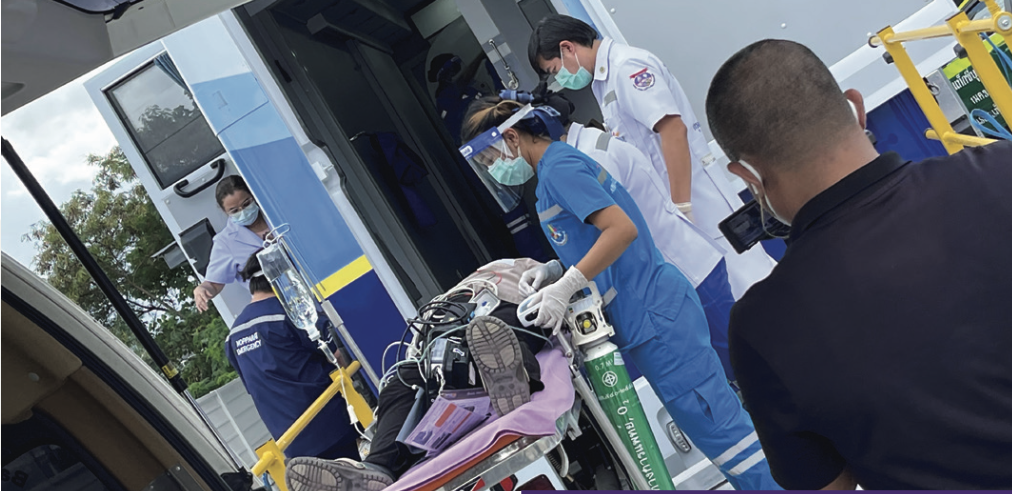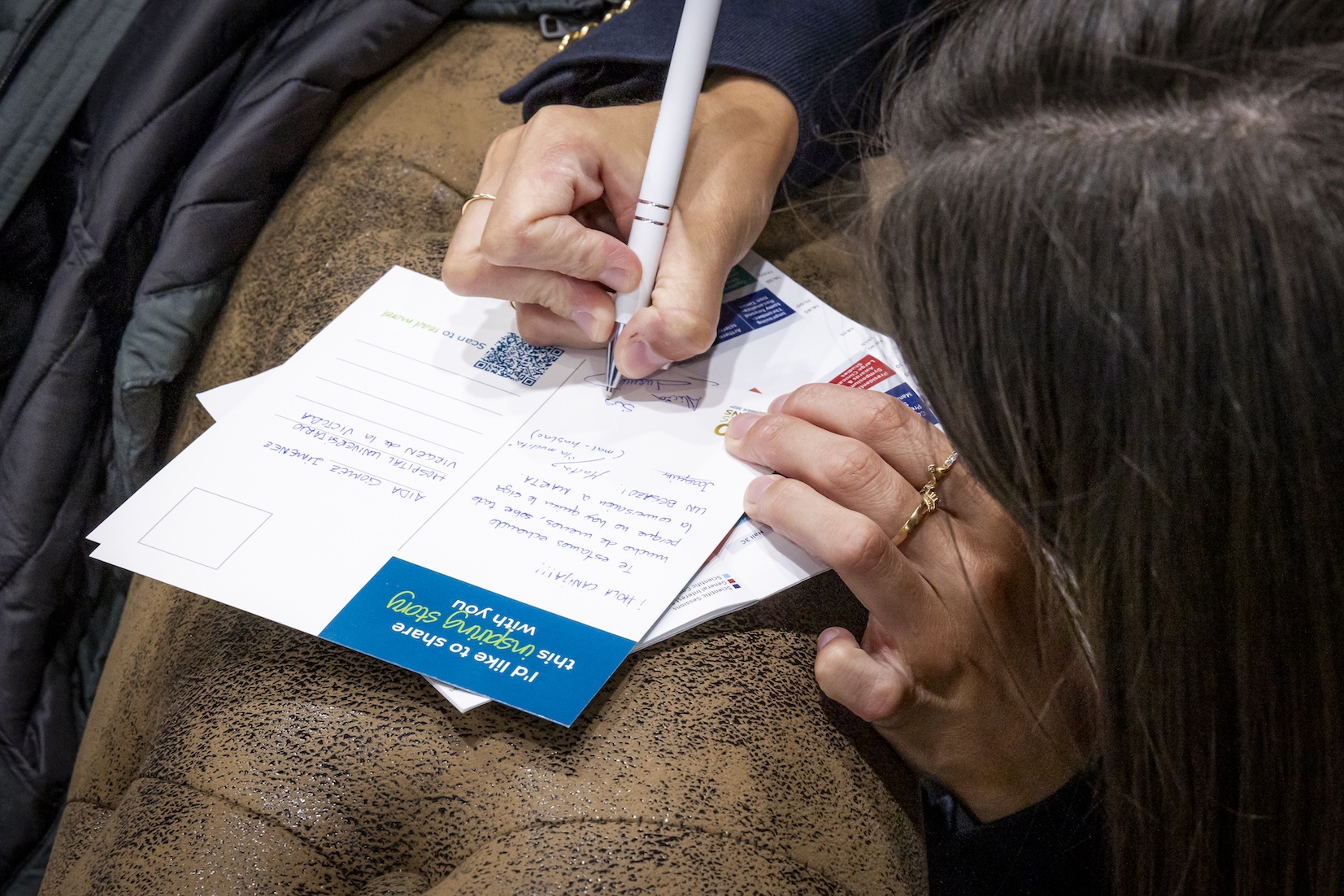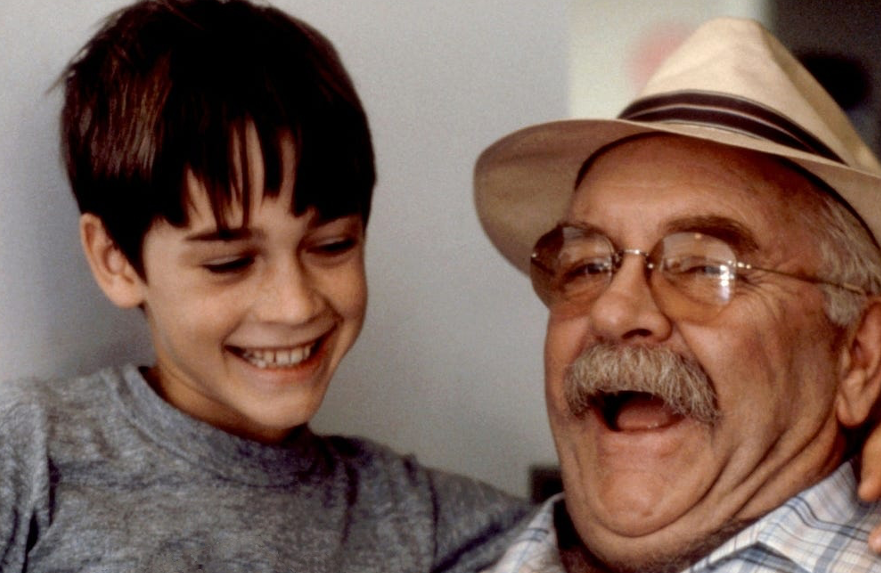태국에 모바일 뇌졸중 병동을 배치하면 뇌졸중 생존자의 생명을 구하고 장애를 줄일 수 있습니다. Angels 태국 팀과의 시뮬레이션 연습을 통해 테스트해 봅니다.

시간은 급성 허혈성 뇌졸중 환자의 치료에 가장 중요합니다. 환자가 치료를 빨리 받을수록, 사건을 생존하여 최소한의 장애로 자신의 삶으로 복귀할 가능성이 더 높다. 시간을 관리한다는 것은 생명을 더 빨리 구한다는 것을 의미하지만, 교통과 교통 체증은 이동 시간과 발병과 치료 사이의 간격을 줄이는 데 중요한 장애물을 제시합니다.
이동형 뇌졸중 병동은 더 빠른 환자 치료에 접근하기 위한 새로운 접근법입니다. 이들은 뇌졸중 환자가 치료를 받는 데 걸리는 시간을 크게 줄일 수 있는 잠재력이 있습니다. 환자에게 더 빨리 도달하고, 병원으로 이송되는 동안 진단과 치료를 즉시 관리하여 생존 가능성과 삶의 질을 높일 수 있습니다.
이동형 뇌졸중 병동은 이미 태국의 5개 구역에서 운영되고 있으며, 지역사회에서 뇌졸중 환자의 치료를 지원하고 있습니다. 2021년에, 이들은 치료 시간을 단축할 수 있는 능력을 평가하고 개선하기 위해 수행된 시험의 시험대상자가 되었다. Angels 태국 팀은 태국 최초의 가상 모바일 뇌졸중 병동 시뮬레이션 2회를 태국의 신경학 연구소, 해설에 위치한 신경학 전문 병원, 태국 전역의 많은 의과대학에 소속된 주요 교육 병원인 Nopparat Rajathanee Hospital에서 시작했습니다.
Neurological Institute of Thailand의 시뮬레이션 연습은 응급 의사, 신경과 전문의, 뇌졸중 간호사, 방사선과 전문의를 포함한 약 30명의 참여자들을 참여시켰습니다. 모바일 뇌졸중 병동을 관리하는 프로세스를 이해하기 위한 논의로 시작되었으며, 그 후 Angels 팀은 워크플로우를 보다 편리하고 신속하게 조정하기 위한 제안을 공유했습니다. 그런 다음, 비디오를 녹화한 가상 이벤트에서 시스템을 시험하였다.
시뮬레이션은 “환자”가 뇌졸중을 시사한 증상을 보고하기 위해 병원의 핫라인 1669에 전화했을 때 시작되었습니다. 의사, 간호사, 방사선과 전문의를 이송하는 이동형 뇌졸중 병동이 현장으로 이송되어 뇌졸중에 대해 환자를 평가했습니다. CT 스캔은 장치에 탑재하여 수행하였고, 영상은 차량과 병원을 연결한 시스템을 통해 전송하였다.
원격의료 네트워크를 통해 연결된 신경과 전문의와의 원격 상담 후, 혈전용해술로 환자를 치료하기로 결정했다. 이동 장치에 탑재된 의사는 즉시 볼루스를 투여하여, 이동 뇌졸중 장치가 도착한 후 20분 이내에 환자가 rt-PA를 투여받습니다. 그 후 병동은 병원으로 돌아와 뇌졸중 뇌졸중 병동에 입원한 환자를 받을 준비가 된 전문가 팀이 있었습니다.
시뮬레이션에 따르면 이동형 뇌졸중 병동은 치료 시간을 30분에서 60분으로 줄일 수 있으며, 이에 비해 아무런 도움 없이 병원으로 여행하는 환자의 경우 평균 DTN 시간은 120분입니다. 이동형 뇌졸중 병동은 급성 뇌졸중 환자에게 좋은 대체 경로를 제공하며, 시뮬레이션에서 나타나는 조정 및 개선의 기회는 뇌졸중 관련 사망률 및 장애와 싸우는 데 있어 훨씬 더 강력한 도구가 될 수 있음을 시사합니다.




